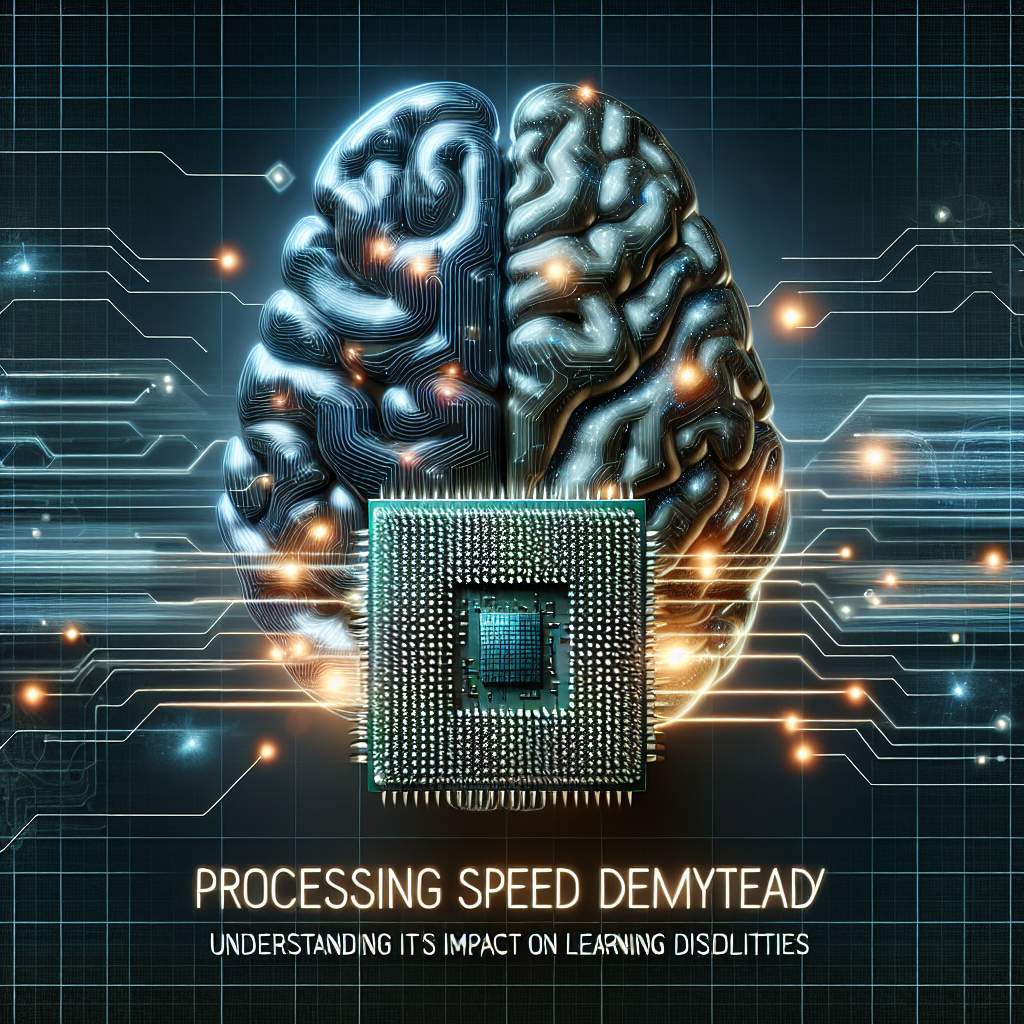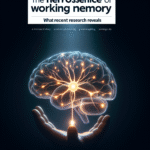
Processing Speed Demystified: Understanding Its Impact on Learning Disabilities
Introduction
Imagine sitting in a classroom where information is exchanged at lightning speed. For many students, especially those with learning disabilities, keeping up can feel like trying to sprint through a marathon. In this crucial exploration, "Processing Speed Demystified: Understanding Its Impact on Learning Disabilities," we will unravel the complexities of processing speed and how it plays a significant role in academic success—and beyond. The goal is to illuminate this often-overlooked cognitive domain and provide insights that can lead to more effective interventions.
As we dive deeper, we’ll explore real-world implications, learn about unique case studies, and obtain strategies to help students maximize their potential. This is not merely a technical discussion; it’s a quest for understanding that can transform lives.
What is Processing Speed?
Defining Processing Speed
Processing speed refers to the rate at which an individual can accurately process information, be it verbal, auditory, or visual. It’s crucial for tasks like reading comprehension, problem-solving, and even social interactions. Think of it as the cognitive engine that drives learning; slower processing speed can create hurdles that affect academic performance and emotional well-being.
The Science Behind Processing Speed
Cognitive scientists categorize processing speed as a vital cognitive component, impacting various learning domains. While we do not always recognize it, processing speed encompasses two critical aspects: speed of retrieval and speed of comprehension.
| Aspect | Definition |
|---|---|
| Speed of Retrieval | How quickly one can recall information |
| Speed of Comprehension | The pace at which one can understand and integrate new information |
Why Processing Speed Matters in Learning Disabilities
The Connection to Learning Disabilities
Learning disabilities, such as dyslexia, ADHD, and others, often correlate with slower processing speeds. Students may find it difficult to take in information quickly, leading to challenges in reading, math, and writing. This can create a lingering impact that extends beyond the classroom, affecting social skills and self-esteem.
Case Studies: Real-World Implications
Case Study 1: The Tale of Jason
Background: Jason, a seventh grader diagnosed with ADHD, struggled in school despite being bright. His teachers reported that he often lagged in completing assignments.
Analysis: By assessing Jason’s processing speed, educators discovered he needed more time for reading tasks. Adjusting his testing environment to offer extended time not only improved his grades but also enhanced his confidence. This reveals how understanding processing speed can lead to tailored approaches that honor a student’s unique strengths.
The Impact on Learning Environments
Creating supportive and accommodating environments is essential for gauging and improving processing speed.
- Explicit Teaching Techniques: Use clear and straightforward instruction for complex concepts.
- Multi-Sensory Learning: Engage various senses to help students internalize and process information effectively.
- Assistive Technology: Tools like speech-to-text software can significantly aid students who struggle with writing.
Strategies to Enhance Processing Speed
Individualized Education Programs (IEP)
IEPs are tailored educational approaches designed for students with learning disabilities. They often include accommodations for processing speed, such as extra time on tests and assignments, which can drastically improve academic outcomes.
Implementing Classroom Modifications
Example Modifications:
| Modification Type | Description |
|---|---|
| Flexible Timing | Allow extra time for tasks and assignments |
| Visual Aids | Integrate charts, graphics, and other visual tools |
| Chunk Information | Break down information into smaller, manageable parts |
Cognitive Training Programs
Research indicates that targeted cognitive training can improve processing speed. Programs designed to enhance memory and attention can help students become more adept at handling classroom demands.
Increasing Awareness Among Educators
Educators’ understanding of processing speed’s effect on learning disabilities is vital. Workshops and training sessions can guide teachers in identifying and nurturing students’ unique learning profiles.
The Emotional and Social Implications
Building Self-Esteem
A child’s perception of success in school can shape their self-worth. Recognizing the role of processing speed allows students to celebrate their achievements, no matter how small.
Social Interactions
Slow processing speed can hinder students’ ability to engage in timely discussions. Awareness among peers is crucial to reducing social isolation. Educators and parents can work together to create strategies that foster inclusive interactions.
Final Thoughts: Moving Forward
Understanding processing speed is a pivotal step toward creating a more supportive learning environment for students with learning disabilities. By demystifying this concept, we empower educators, parents, and students alike to advocate for necessary changes and celebrate accomplishments, big and small.
Conclusion
Processing speed is not merely a metric to judge students; it’s a profound component affecting learning dynamics across the board. "Processing Speed Demystified: Understanding Its Impact on Learning Disabilities" urges us to rethink how we approach education for students who face these challenges. With awareness and action, we can cultivate academic success and emotional growth, allowing every student to thrive.
FAQs
1. What is the difference between processing speed and intelligence?
Processing speed measures the rate at which one can process information, while intelligence refers to a broader understanding of one’s cognitive abilities. A student may have a high IQ but may still struggle with processing speed.
2. How is processing speed assessed?
Processing speed is typically assessed through standardized tests that measure how quickly and accurately a student can complete tasks involving information processing.
3. Can processing speed improve over time?
Yes, with the right interventions and strategies tailored to the individual student’s needs, processing speed can improve over time.
4. Are there any specific tools to aid students with processing speed challenges?
Yes, assistive technologies such as dictation software, visual organizers, and other planning tools can help students manage their workload more effectively.
5. What are some signs that a student might have processing speed issues?
Signs may include difficulty completing tasks in the allotted time, challenges with reading comprehension, trouble following multi-step instructions, and decreased academic performance despite having a strong grasp of the material.
This exploration of "Processing Speed Demystified: Understanding Its Impact on Learning Disabilities" has equipped us with valuable insights into the interplay between processing speed and learning challenges. As we look ahead, let’s commit to fostering environments where every student has the chance to learn and grow at their own pace.
















